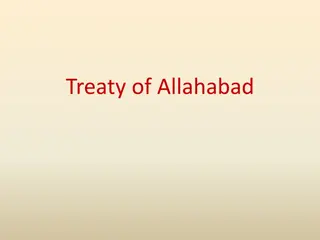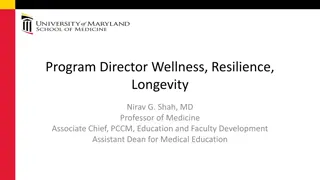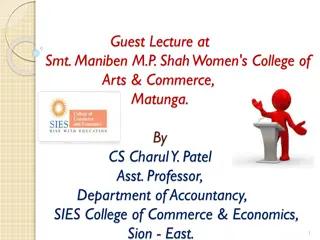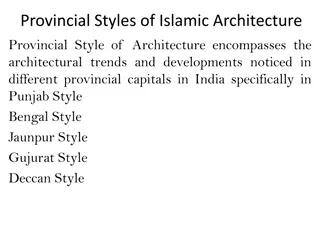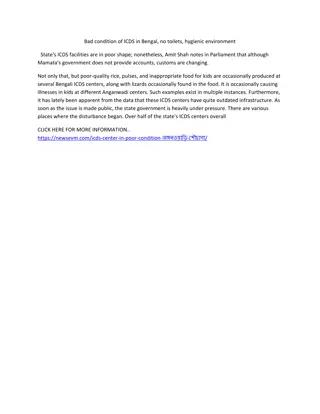
Chronic Diseases in Indigenous People: Health Policies and Programs by ChandraKant P. Shah
Explore the burden of chronic diseases in Indigenous populations and the essential factors that must be considered in health policies and programs. Delve into root cause analysis, social determinants of health, and Indigenous concepts of health and healing.
Download Presentation

Please find below an Image/Link to download the presentation.
The content on the website is provided AS IS for your information and personal use only. It may not be sold, licensed, or shared on other websites without obtaining consent from the author. If you encounter any issues during the download, it is possible that the publisher has removed the file from their server.
You are allowed to download the files provided on this website for personal or commercial use, subject to the condition that they are used lawfully. All files are the property of their respective owners.
The content on the website is provided AS IS for your information and personal use only. It may not be sold, licensed, or shared on other websites without obtaining consent from the author.
E N D
Presentation Transcript
CHRONIC DISEASES IN INDIGENOUS PEOPLE: HEALTH POLICIES & PROGRAM CHANDRAKANT P. SHAH M.D., FRCPC, O.ONT. PROFESSOR EMERITUS, DALLA LANA SCHOOL OF PUBLIC HEALTH & HONORARY STAFF PHYSICIAN, ANISHNAWABE HEALTH TOROTO & BOARD MEMBER, ANISHNAWBE HEALTH FOUNDATION & HONORARY STAFF, THE HOSPITAL FOR SICK CHILDREN E-mail: c.shah@utoronto.ca
OBJECTIVES 1. BURDEN OF CHRONIC DISEASES & THEIR CONSEQUENCES 2. HEALTH POLICY & PROGRAM MUST CONSIDER IN DEALING WITH CHRONIC DISEASES IN INDIGENEOUS PEOPLE THE FOLLOWING ESSENTIAL FACTORS: ROOT CAUSE ANALYSIS ROLE OF SOCIAL DETERMINANTS OF HEALTH INDIGENOUS CONCEPT OF HEALTH & HEALING
BURDEN OF CHRONIC DISEASES & THEIR CONSEQUENCES
Example: Diabetes First Nations and Labrador Inuit to the Canadian Population, Age-gender-specific and age adjusted prevalence (%) 34.1 32.4 22.2 12.4 16.9 6.6 3.6 27.8 18.1 17.9 FN-F 8.4 40 11 1.9 FN-M 2.3 30 Gender 9.3 3.2 5.4 1.6 3 20 1.2 Can-F 0.4 7 11.4 10 3.4 Can-M 3.3 1.8 0.6 0.4 0 15-24 25-34 35-44 45-54 55-64 65+ Age- Adj. Age Can-M Can-F FN-M FN-F 6 Source: Young, T.K. et al. and FNIRHS Steering Committee and Canadian data from the NPHS, 1994-95.
CHRONIC DISEASES LEADING TO DISABILITY
Source: Adapted from Statistics Canada, Custom Tabulation, Canadian Survey on Disability, 2012. Percentages are rounded to the nearest one decimal point. Reprinted from Ontario Human Rights Commission: By The Number A Statistical Profile of People with mental health and addiction disabilities in Ontario, October 2015. E: use with caution
FACTORS INFLUENCING CHRONIC DISEASES IN INDIGENEOUS PEOPLE ROOT CAUSE ANALYSIS
Root Cause Analysis: Delayed Tsunami Effect on Health and Wellbeing of Aboriginal People due to Colonization and Post Colonial Policies
From her Dene knowledge and experience, everything that has to do with ill health as understood within Western medicine is a result of separation from land and land-based practices. LISA BOIVIN We are the land. The land is us Dene artist Alex Janvier CAN MED ASSOC JOURNAL, 2018; 190: E1085-6
FACTORS INFLUENCING CHRONIC DISEASES IN INDIGENEOUS PEOPLE SOCIAL DETERMINANTS OF HEALTH
Social Determinants of Health SOCIAL DETERMINANTS OF HEALTH ABORIGINAL Income and Social Status Social Support Networks Education Employment/working conditions Social Environment Physical Environment Personal Health Practices and Coping Skills Healthy Child Development Gender and Culture
Social Determinants of Health RACISM IMPACT OF POST- COLONIAL POLICIES
The Impact of Chronic Stress on the Health of Aboriginal People
FACTORS INFLUENCING CHRONIC DISEASES IN INDIGENEOUS PEOPLE CONCEPT OF HEALTH & HEALING
ABORIGINAL CONCEPT OF HEALTH AND HEALING Spiritual Physical Emotional Mental Emotional 18
Culturally Sensitive Programs Needed to Enhance Health Ceremonies are about celebration, healing, and destroying negativity. Spiritual Programs: Sweat Lodge Shaking Tent Full Moon Ceremony Naming Ceremony Clan Feasts Pipe Ceremony Vision Quests Smudging Traditional Teachings Cultural Workshops 19
Sharing Bioethics shows dozens of land-based teachings. At first glance, the viewer can identify two intersecting circles of medicine. A circle surrounds a clinician in a white coat and bioscientific tools of medicine, such as a stethoscope and x-rays. In the Dene circle of medicine, plant medicine and Dene medicine stories are represented by a medicine bundle, strawberries and antlers. In the space where the circles intersect, the two healers also connect in a new space of relationship and possibility. In this new circle of medicine, neither knowledge or perspective is lost. Images Courtesy of Lisa Boivin CAN MED ASSOC JOURNAL, 2018; 190: E1085-6.
REFERENCE 1. READING J. (2008): THE CRISIS OF CHRONIC DISEASES AMONG ABORIGINAL PEOPLES, A CHALLENGE FOR PUBLIC HEALTH, POPULATION HEALTH & SOCIAL POLICY. CENTER FOR ABORIGINAL RESEARCH, UNIV. OF VICTORIA https://dspace.library.uvic.ca/bitstream/handle/1828/5380/Chro nic-Disease-2009.pdf?sequence=1 2. NATIONAL COLLABORATING CENTER FOR ABORIGINAL HEALTH https://www.nccah-ccnsa.ca/en/ THANK YOU CONTACT: DR. C. P. SHAH E-mail: c.shah@utoronto.ca


